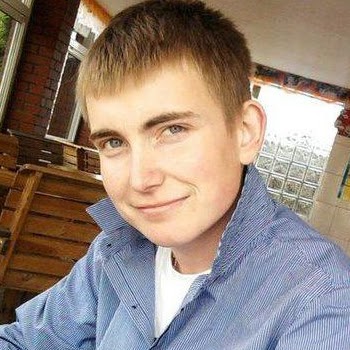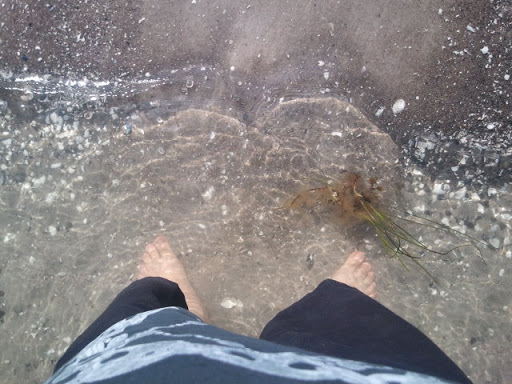Robert P Radtke
age ~86
from Kingwood, TX
- Also known as:
-
- Robert Paul Radtke
- Bob P Radtke
- Rob P Radtke
- Bobby Radtke
- Albert P Redtke
- Phone and address:
-
2103 River Falls Dr, Humble, TX 77339
8326289938
Robert Radtke Phones & Addresses
- 2103 River Falls Dr, Kingwood, TX 77339 • 8326289938
- Humble, TX
- Conroe, TX
- San Antonio, TX
- Kirkwood, CA
- Montgomery, TX
- 2103 River Falls Dr, Humble, TX 77339
Work
-
Position:Protective Service Occupations
Education
-
Degree:Associate degree or higher
Us Patents
-
Thermally Stable Diamond Brazing
view source -
US Patent:7487849, Feb 10, 2009
-
Filed:May 16, 2005
-
Appl. No.:11/130036
-
Inventors:Robert P. Radtke - Kingwood TX, US
-
International Classification:E21B 10/36
-
US Classification:175434, 175435, 1754202, 175426
-
Abstract:A cutting element and a method for forming a cutting element is described and shown. The cutting element includes a substrate, a TSP diamond layer, a metal interlayer between the substrate and the diamond layer, and a braze joint securing the diamond layer to the substrate. The thickness of the metal interlayer is determined according to a formula. The formula takes into account the thickness and modulus of elasticity of the metal interlayer and the thickness of the TSP diamond. This prevents the use of a too thin or too thick metal interlayer. A metal interlayer that is too thin is not capable of absorbing enough energy to prevent the TSP diamond from fracturing. A metal interlayer that is too thick may allow the TSP diamond to fracture by reason of bending stress. A coating may be provided between the TSP diamond layer and the metal interlayer. This coating serves as a thermal barrier and to control residual thermal stress.
-
Ceramic Impregnated Superabrasives
view source -
US Patent:7488537, Feb 10, 2009
-
Filed:Sep 1, 2004
-
Appl. No.:10/931671
-
Inventors:Robert P. Radtke - Kingwood TX, US
Andrew Sherman - Kirtland OH, US -
International Classification:B32B 9/00
-
US Classification:428408, 4283077, 4283122, 4283126, 428698, 428704
-
Abstract:A superabrasive fracture resistant compact is formed by depositing successive layers of ceramic throughout the network of open pores in a thermally stable self-bonded polycrystalline diamond or cubic boron nitride preform. The void volume in the preform is from approximately 2 to 10 percent of the volume of the preform, and the average pore size is below approximately 3000 nanometers. The preform is evacuated and infiltrated under at least about 1500 pounds per square inch pressure with a liquid pre-ceramic polymerizable precursor. The precursor is infiltrated into the preform at or below the boiling point of the precursor. The precursor is polymerized into a solid phase material. The excess is removed from the outside of the preform, and the polymer is pyrolized to form a ceramic. The process is repeated at least once more so as to achieve upwards of 90 percent filling of the original void volume. When the remaining void volume drops below about 1 percent the physical properties of the compact, such as fracture resistance, improve substantially.
-
Sparker Type Wellbore Seismic Energy Source Having Controllable Depth Independent Frequency
view source -
US Patent:8619503, Dec 31, 2013
-
Filed:Sep 29, 2010
-
Appl. No.:12/893396
-
Inventors:Robert P. Radtke - Kingwood TX, US
Robert H. Stokes - Austin TX, US
David A. Glowka - Red Rock TX, US -
Assignee:Technology International, Inc. - Kingwood TX
-
International Classification:G01V 1/157
-
US Classification:367147
-
Abstract:A wellbore seismic source includes a sparker electrically coupled to a power source. The sparker is disposed in a pressure-sealed canister, wherein the canister is at least partially filled with liquid. At least one of the pressure of the liquid and the energy discharged by the power source through the sparker is selected to cause emission of acoustic energy at a selected frequency.
-
Method For Enhancing Low Frequency Output Of Impulsive Type Seismic Energy Sources And Its Application To A Seismic Energy Source For Use While Drilling
view source -
US Patent:20090154290, Jun 18, 2009
-
Filed:Dec 17, 2008
-
Appl. No.:12/337406
-
Inventors:Robert P. Radtke - Kingwood TX, US
Robert H. Stokes - Austin TX, US
David A. Glowka - Red Rock TX, US -
International Classification:G01V 1/40
-
US Classification:367 25
-
Abstract:A method for operating an impulsive type seismic energy source in a firing sequence having at least two actuations for each seismic impulse to be generated by the source. The actuations have a time delay between them related to a selected energy frequency peak of the source output. One example of the method is used for generating seismic signals in a wellbore and includes discharging electric current through a spark gap disposed in the wellbore in at least one firing sequence. The sequence includes at least two actuations of the spark gap separated by an amount of time selected to cause acoustic energy resulting from the actuations to have peak amplitude at a selected frequency.
-
Drill Bit Having Cutting Elements With Heat Removal Cores
view source -
US Patent:44782977, Oct 23, 1984
-
Filed:Sep 30, 1982
-
Appl. No.:6/430988
-
Inventors:Robert P. Radtke - Kingwood TX
-
Assignee:Strata Bit Corporation - Houston TX
-
International Classification:E21B 1046
-
US Classification:175329
-
Abstract:A drill bit for connection on a drill string has a hollow tubular body with an end cutting face and an exterior peripheral stabilizer surface with cylindrical sintered carbide inserts positioned therein having polycrystalline diamond cutting elements mounted on said inserts. Said inserts each having a longitudinal recess therein filled with a soft, heat conducting metal operable to facilitate the transfer of heat away from said cutting elements. The drill bit is also provided with removable and replacable nozzles.
-
Drag Blade Bit With Diamond Cutting Elements
view source -
US Patent:44999585, Feb 19, 1985
-
Filed:Apr 29, 1983
-
Appl. No.:6/489934
-
Inventors:Robert P. Radtke - Kingwood TX
Wilford V. Morris - Houston TX -
Assignee:Strata Bit Corporation - Houston TX
-
International Classification:E21B 1046
-
US Classification:175329
-
Abstract:A drag blade bit for connection on a drill string has a hollow body on which there are welded a plurality of cutting or drilling blades. The blades extend longitudinally and radially of the bit body and terminate in relatively flat, radially extending cutting edges. A plurality of cutters are positioned in and spaced along the cutting edges and consists of cylindrical sintered carbide inserts with polycrystalline diamond cutting elements mounted thereon. Hardfacing is provided on the cutting edges between the cutters and on the other surfaces of the blades and the bit body subject to abrasive wear. One or more nozzles are positioned in passages from the interior of the bit body for directing flow of drilling fluid for flushing cuttings from the well bore and for cooling the bit.
-
Drill Bit With Carbide Coated Cutting Face
view source -
US Patent:43960774, Aug 2, 1983
-
Filed:Sep 21, 1981
-
Appl. No.:6/303721
-
Inventors:Robert P. Radtke - Kingwood TX
-
Assignee:Strata Bit Corporation - Houston TX
-
International Classification:E21B 1046
E21B 1060 -
US Classification:175329
-
Abstract:A drill bit for connection on a drill string has a hollow tubular body with an end cutting face provided with a tungsten carbide coated surface and an exterior peripheral stabilizer surface with cylindrical sintered carbide inserts positioned therein. Nozzle passages extend from the interior of the bit body through the cutting face for receiving a removable and interchangeable nozzle member therein. The cutting face has a plurality of recesses therein which receive, by an interference fit, a plurality of cutting elements of the type known as STRATAPAX, consisting of a cylindrical stud having an angular supporting surface with a cutting disc bonded thereon consisting of sintered carbide having a cutting surface of polycrystalline diamond. The recesses in the cutting face have milled offset recesses adjacent to the edges thereof which are sized and positioned to permit the cutting discs to be partially recessed and to restrain the cutting elements from rotation during use. The cutting face is coated with tungsten carbide to a thickness of 0. 012-0. 040 in.
-
Drill Bit Nozzle
view source -
US Patent:43818250, May 3, 1983
-
Filed:Aug 27, 1981
-
Appl. No.:6/296811
-
Inventors:Robert P. Radtke - Kingwood TX
-
Assignee:Strata Bit Corporation - Houston TX
-
International Classification:E21B 1060
-
US Classification:175393
-
Abstract:A drill bit for connection on a drill string has a hollow tubular body with an end cutting face and an exterior peripheral stabilizer surface with cylindrical sintered carbide inserts positioned therein and a novel arrangement for securing replaceable nozzles. Nozzle passages extend from the interior of the bit body through the cutting face for receiving a removable and interchangeable nozzle member therein. A portion of the length of each passage is threaded and the remainder of the passage is enlarged and of a smooth bore. The nozzle member is formed of wear-resistant hard metal, e. g. carbide, and has a metal sleeve brazed thereon with male threads operable to be fitted in the threads in said nozzle passage. The nozzle member is threadedly secured in place during installation and optionally further secured against unscrewing and additionally protected against wear or erosion by a metal or hard metal, e. g. carbide, retaining ring having an interference fit in the smooth portion of the nozzle passage.
Name / Title
Company / Classification
Phones & Addresses
President
Technology International Inc
Industrial Automation · Engineering Services & Computer Software Development
Industrial Automation · Engineering Services & Computer Software Development
2103 Riv Fls Dr, Humble, TX 77339
2813598520
2813598520
Resumes

Robert Radtke
view sourceLocation:
United States

Information Technology Specialist At 1St Sig Bde
view sourcePosition:
Information Technology Specialist at 1st SIG BDE
Location:
US Military Posts in the Pacific
Industry:
Information Technology and Services
Work:
1st SIG BDE
Information Technology Specialist
Information Technology Specialist

President At Technology International, Inc.
view sourcePosition:
President at Technology International, Inc.
Location:
Houston, Texas Area
Industry:
Research
Work:
Technology International, Inc. since Jan 1997
President
BAE SYSTEMS, INC Jan 1985 - Jan 1997
Director of Business Development
NL MWD (now Halliburton) Jan 1984 - Jan 1985
Director of Marketing and Technical Services
STRATA BIT CORPORATION (now Halliburton Security) Jan 1980 - Jan 1984
Vice President Engineering
NL HYCALOG (now NOV Reed-Hycalog) Jan 1972 - Jan 1980
Manager
President
BAE SYSTEMS, INC Jan 1985 - Jan 1997
Director of Business Development
NL MWD (now Halliburton) Jan 1984 - Jan 1985
Director of Marketing and Technical Services
STRATA BIT CORPORATION (now Halliburton Security) Jan 1980 - Jan 1984
Vice President Engineering
NL HYCALOG (now NOV Reed-Hycalog) Jan 1972 - Jan 1980
Manager
Education:
University of Illinois at Urbana-Champaign 1957 - 1963
Bachelor of Science, Materila Science and Engineering University of California
Bachelor of Science, Materila Science and Engineering University of California

Robert Radtke
view sourceLocation:
United States

Information Technology Specialist At 1St Signal Brigade
view sourceLocation:
US Military Posts in the Pacific
Industry:
Information Technology and Services

Robert Radtke
view sourceLocation:
United States
Youtube
Googleplus

Robert Radtke
Work:
PGC Solutions - President (1997)
Education:
University of Florida - Engineering, George Washington University - Administration

Robert Radtke

Robert Radtke

Robert Radtke

Robert Radtke

Robert Radtke

Robert Radtke

Robert Radtke
Flickr

Robert Radtke
view source
Robert Radtke
view source
Robert Radtke
view source
Robert Radtke
view source
Robert Radtke
view source
Robert Radtke
view source
Robert Radtke
view source
Robert Radtke
view sourceMyspace
Classmates

Robert Radtke
view sourceSchools:
Campion Jesuit High School Prairie Du Chien WI 1948-1952
Community:
Terry Miedzianowski, Becky Rehm, Richard Kimberly

Robert Radtke
view sourceSchools:
Emmerton Elementary School San Bernardino CA 1972-1974, Serrano Middle School Highland CA 1976-1978

Robert Radtke
view sourceSchools:
John W. Cook Elementary School Chicago IL 1948-1953
Community:
Alice Jackson, William Burns

Robert Radtke
view sourceSchools:
Victoria School Saskatoon Afghanistan 1954-1958
Community:
John Lyons, Fred Tatler, Dawn Randall, Gwen Sommerfeld

Robert Radtke
view sourceSchools:
Navarro High School Geronimo TX 1999-2003
Community:
Jennifer Adame

Robert Radtke
view sourceSchools:
Osakis High School Osakis MN 2003-2007
Community:
Brittany Decker, Kayla Hinrichs, Katherine Haessly, Brett Radtke, Cynthia Brake, Josh Wittrock, Lydia Lucero, Paul Hukriede, Brock Landis, Constance Hinnenkamp, Samantha Massmann
Get Report for Robert P Radtke from Kingwood, TX, age ~86













